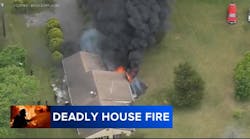At a recent workshop involving fire and EMS personnel, law enforcement, tow operators, the media, hazmat responders and related services, a 10-point consideration plan was developed:
1. Establish the area around the incident as a work zone – protect emergency responders and the victim – before initiating actions. Make the “work zone a safe area to work with, rescue the victim and perform related services.”2. Be visible to the motoring public and wear reflective equipment – protect yourself and your personnel. Personal protective equipment (PPE) standards exist and that equipment must be worn.
3. Pre-plan hard-to-get-to or frequent accident locations – advanced planning saves time and resources while reducing conflict. You know your area, you know the frequent accident spots, you know what you can and can’t do from experience, so plan ahead to bring the right people and equipment and train accordingly.
4. Stage equipment before bringing it on the scene – don’t congest the scene unnecessarily. Space is precious at the scene of an accident; keep equipment away until it is really needed.
5. Bring in the right equipment and proper resources – the right tools accomplish the job more efficiently. You have to manage the situation, bring the right equipment and people to get the job done right, so do the right thing, and do the right thing right.
6. Have appropriate lighting – lighting makes performance in the work zone more efficient. This may mean specialized apparatus response that will require pre-planning, special dispatch procedures and scene control.
7. Bring adequate water. Know in advance where to obtain water supplies and how to get the water to the scene. Pre-planning is the only way to accomplish this, by analyzing prior incidents and thinking what might happen “if.”
8. Find a location for EMS triage. The more victims you have, the more coordination is needed for EMS. If multiple victims exist, find a safe area away from traffic movement, vehicle exhaust and related hazards to triage and treat patients.
9. Establish a vehicle (ground/air) movement capability to transport victims. Work with police to establish the EMS unit flow and pre-define air medical transport sites, so that in the haste of trying to solve the problems at hand, another problem is not created by preventing the movement of EMS units.
10. Establish a communication link as soon as possible with law enforcement. This eliminates a conflicting understanding of needs, roles and responsibilities. Know the law enforcement and EMS incident commanders at the scene and make sure there is an interchange of what will be done by whom and when, in order to coordinate service delivery.
You may, based on your experience, have additional key considerations. If so, make sure that they are integrated to assure awareness, knowledge, understanding, manage conflicts and operate safely in order to enhance:
- Coordination
- Cooperation
- Communication





